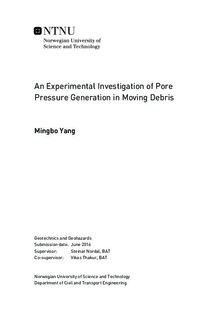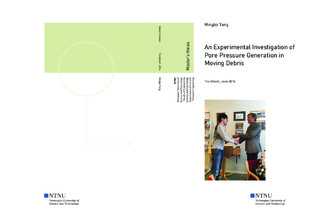| dc.description.abstract | Debris flow is a typical type of landslide and has huge impact on human life. The moving debris in traditional numerical modeling is assumed as hydrostatic along the flow depth, which is not the actual case when the generation of excess pore pressure in the shear zone significantly influences the flow mobility. The thesis studies the excess pore pressure built-up in the shear zone of the moving debris by using a rotating drum apparatus, which can rotate itself to provide the shear rate and generate the shear stress on the basal layer of the debris material. Samples with different silt content were tested under different speeds, and the result shows the excess pore pressure build-up is highly considerable related to the fine grain content. Results were also verified by comparing with two other studies using coaxial cylinder (Kyoji Sassa & Gonghui Wang, 2003; Xiang Yu, 2015), proving the excess pore pressure in the shear zone of the moving debris is highly considerable. | |

